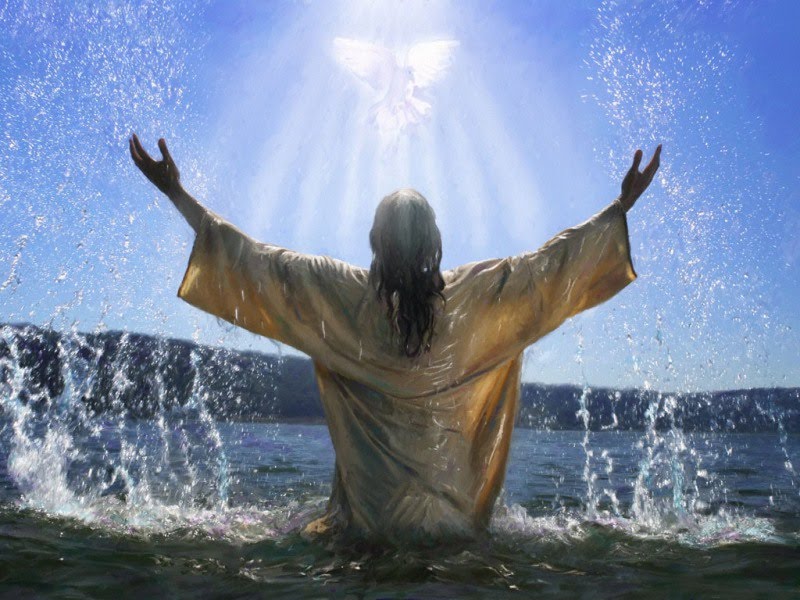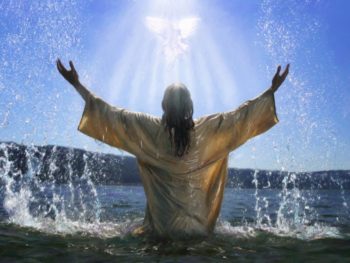
Immersion as Part of Seminary Formation
 As early as the first week of December, we have been preparing for the Belen or nativity scene. It was to be placed in our chapel come December 16, the start of the Aguinaldo Masses. Probably not like any other nativity scenes, ours is just Mary and Joseph and the empty manger. The image of the baby Jesus was to be placed in the manger on the eve of Christmas while the Gloria is being sung during the mass.
As early as the first week of December, we have been preparing for the Belen or nativity scene. It was to be placed in our chapel come December 16, the start of the Aguinaldo Masses. Probably not like any other nativity scenes, ours is just Mary and Joseph and the empty manger. The image of the baby Jesus was to be placed in the manger on the eve of Christmas while the Gloria is being sung during the mass.
It was way too tiring and time consuming putting up the decorations for Christmas than putting them down last Sunday, the feast of the Baptism of the Lord. Time sure flies too fast. The previous Sunday, Jesus was still a baby, when the Magi visited him and paid homage to him. A week later, Jesus is already 30 years old, being baptized by John the Baptist at the River Jordan.
But Jesus had to grow up, to become a mature individual and take on his mission, the very reason why he was born. But before that, he had to undergo the process of maturation – immersion, the very act of being baptized. Immersion is a process of maturation. In baptism, it means dying to our sinful ways and rising to a new life with the risen Christ. But immersion also means to be one with the people, to be able to experience the daily life of a community.
I remember when I was a seminarian; one of our immersion exposures was in Tala Leprosarium. It was a community in Caloocan City in Metro Manila where those afflicted with leprosy are taken care of. It is an entire community where most of the residents are lepers. There is a parish church and a hospital for lepers where the patients are housed in several houses or wards.
We stayed there for about two weeks not primarily to be exposed to the lepers, but for a media education seminar-workshop. In Tala Leprosarium, Fr. Rogelio Alarcon, OP, the Dominican priest assigned there had put up a community television station. The reach of the television station is only the whole community of Tala. Fr. Alarcon thought of using television as a medium of mass communication for the benefit of the lepers who stay in the hospital wards and who are not able to go to church to attend the mass. The lepers were able to see and hear the mass over the television.
After the mass, part of our immersion exposure was to distribute Holy Communion to the patients in the various wards. I should say that one has to be psychologically, emotionally and spiritually prepared to be able to deal and interact with the patients afflicted with leprosy. Some of the patients have already lost some of their body parts due to leprosy. Leprosy is a disease that affects the nerves of the body, starting from the extremities. That is why I have seen patients with degenerating fingers on their hands and feet. Some have even lost their ears and noses to leprosy.
What I will never forget was a visit to the female ward where the patients were elderly women. In one of our visits to the patients, there was one who must have been forgotten by her relatives and was never visited by any of her family members. She was crying while sharing with us her story. She also told us how thankful she was to us for paying them a visit. Afterwards, she offered us snacks and prepared coffee with the cup that she was using. At first, I was hesitant to accept the coffee and told her that I was not hungry. I thought to myself that I might be afflicted with leprosy, thinking that I will be using the same cup that she was using. But in order not to hurt her feelings, I took the coffee and the biscuits that she offered, right from her leprous hands.
Afterwards, I realized that it was what immersion was all about – “dying” to myself or forgetting myself and rising to a new life in Christ. After that immersion exposure, my perspective on many aspects of our life has never been the same.


No Comments